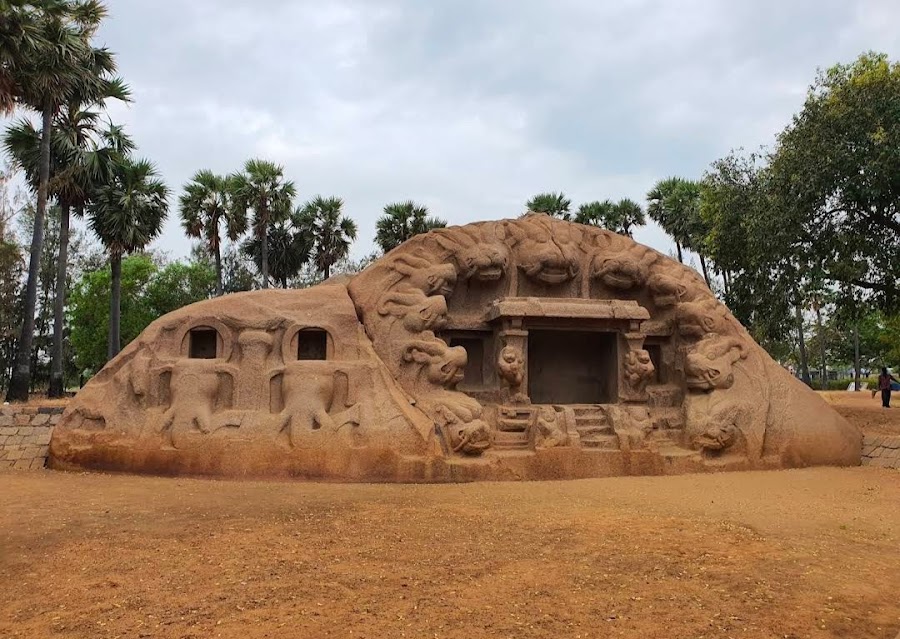
Tiger Cave
Mahabalipuram, India
- Enjoy a picnic by the sea.
- Explore the rock-cut temple complex.
- Learn about Pallava dynasty architecture.
- Relax and enjoy the serene atmosphere.
- Take photos of the tiger head carvings.
Known for:
Description:
Tiger Cave, a popular tourist spot near Mahabalipuram, is not actually a cave but a rock-cut Hindu temple complex. It's renowned for its intricately carved tiger heads surrounding the entrance of a small shrine. The site features a large, open-air stage area, suggesting it might have been used for public performances or gatherings in the past. The scenic beauty of the location, coupled with the unique rock-cut architecture, makes it a must-visit for history buffs, photography enthusiasts, and anyone seeking a peaceful escape from the bustling city. Enjoy the serene atmosphere and imagine the stories etched within these ancient stones. It's a perfect spot for a picnic and a relaxed exploration of South Indian heritage.
History:
The Tiger Cave is believed to have been created in the early 8th century AD, during the reign of the Pallava dynasty. While the exact purpose of the site remains debated, historians suggest it might have served as a place for royal gatherings, open-air theatre, or religious ceremonies. The presence of Durga idols within the complex indicates its association with the worship of the goddess. The carvings, particularly the row of eleven tiger heads, are a significant example of Pallava art and architecture. Over the centuries, the site has stood as a silent witness to the changing tides of history, attracting visitors and researchers alike who are captivated by its unique design and historical significance.